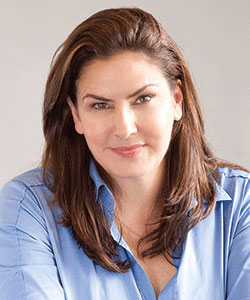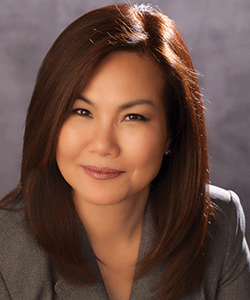Presidential Column
Igniting the BRAIN Initiative
My guest columnist this month is Miyoung Chun, the Executive Vice President of Science Programs at the Kavli Foundation. Dr. Chun was instrumental in the launching of the Brain Research through Advancing Innovative Neurotechnologies (BRAIN) initiative first announced by President Obama in his 2013 State of the Union address. The BRAIN initiative seeks to enhance psychological science by bringing together diverse groups of scholars to discover groundbreaking techniques that will facilitate our understanding of brain function and human behavior. In this column, I asked Dr. Chun to reflect on the path that took her from having a good idea to starting a major research initiative. Below is her story.
-Elizabeth A. Phelps
(Author note: This column is my personal experience and perspective on the how the BRAIN Initiative came to be.)
It’s February 12, 2013. I am home watching the State of the Union address, as I do every year. Ten minutes into President Obama’s speech, I hear: “We have to invest in the best ideas… Today our scientists are mapping the human brain to unlock the answers to Alzheimer’s.” I spring from my couch and ask myself: Did the President just mention the project I’ve been working on for the last 18 months?
I receive my answer 5 minutes later in an email from the White House Office of Science and Technology Policy (OSTP): “Congratulations! You just made the State of the Union.” Further confirmation came later, with National Institutes of Health Director Francis Collins tweeting, “Obama mentions the NIH Brain Activity Map in SOTU.”
The project was known then as the Brain Activity Map (BAM). While I wasn’t certain at that time, it was being tapped as a White House Grand Challenge of the 21st Century. The remarks of the President and NIH Director opened a media blitz, and as the news outlets grabbed hold of the story, the public learned about this endeavor for the first time. For me, however, it all began in September 2011 at the Kavli Royal Society International Centre, 30 minutes outside London.
The meeting — “Opportunities at the Interface of Neuroscience and Nanoscience,” co-hosted by The Kavli Foundation, the Gatsby Charitable Foundation, and the Allen Institute for Brain Science — assembled 27 leading scientists to explore how their disciplines could better collaborate. In the very last session, a 2-hour blue-sky discussion, the idea for a comprehensive map of brain-circuit activity surfaced. According to its proponents, such a map was imperative for understanding how the brain functions. Perception, memory and recognition, reason, emotion, understanding, subconscious processes, consciousness — these abilities define us. And yet, no general theory exists today to explain how the brain produces these higher functions. Unanimously, neuroscientists declared the current bottleneck in their research was due to a scarcity of innovative tools and new methods. To remedy the problem, scientists proposed a large-scale effort to create revolutionary tools and methods to measure and stimulate millions or even billions of neurons simultaneously. The idea gained traction amongst a core group of like-minded scientists and, like that, BAM launched.
The power of the right tool — this instantly resonated with me. In the mid 1980s, as a graduate student in molecular genetics, my research involved sequencing a myosin heavy chain gene of Drosophila melanogaster. Working by hand, gel by gel, it took me a year and a half to sequence the gene and identify a mutation. Fast forward to 2000. With improved DNA sequencing technologies, I could execute the same procedure with sharper results — in a day. This reduction in manpower hours freed up my time to think about my data instead of gathering it; I was generating hypotheses and applications based on results instead of logging monotonous hours in the lab monitoring equipment. So this proposal made sense to me. And I wanted to be a part of this grand vision.
The scientists propelling that vision were Rafa Yuste, Michael Roukes, George Church, Ralph Greenspan, and Paul Alivisatos. I started to work with them right after the session and enthusiastically took on the role of project shepherd. I began connecting to other private and public funding agencies, designing meetings and activities to develop the project, monitoring and participating in writing, ensuring the project didn’t lose steam and was directed down the right paths. Between September 2011 and April 2013, I made over 1,000 phone calls, held 200 teleconferences, flew 200,000 miles, met with 300 scientists, organized four major scientific conferences that drew over 150 scientists, and set up numerous public and private interagency discussion meetings for the BAM project.
A white paper led by Rafa Yuste quickly emerged out of that blue-sky session, and one of the first orders of business I suggested was to send it to OSTP Deputy Director for Technology and Innovation Tom Kalil. To our great surprise, Tom was immediately sold. At the request of Congress, the White House was establishing a working group to set the national direction of neuroscience, so our timing was perfect. I also connected with Story Landis and Tom Insel, directors of the National Institute of Neurological Disorders and Stroke and the National Institute of Mental Health, respectively. They both embraced the idea of a national initiative stimulating rapid, innovative development of neurotechnologies. And they advised scientists, rather than policymakers, to lead. By March 2012, the White House was seeking candidates for their Grand Challenges program, and BAM became one of their candidates. The wheels were turning.
By summer 2012, the scientific core group had grown to 11, with John Donoghue, Terry Sejnowski, Karl Deisseroth, Paul McEuen, Hongkun Park, and Paul Weiss joining the team. This core group would become like a second family to me. I cannot express enough gratitude for their brilliant leadership, tenacious efforts, and kind support through the triumphs and struggles of the project’s gestation.
The prospect of BAM was upbeat the first 6 months, but challenges inevitably followed. On the scientific front, an extensive, diverse group of scientific experts needed to collaborate. When these experts — from neuroscience, nanoscience, physics, chemistry, materials science, computer science, and engineering — would meet, it often proved difficult to get them to speak each other’s language, to stay on point for the bigger picture, and to have faith in a formidable blue-sky idea. Defining project objectives was a particular challenge given the diverse opinions among the 150 scientists who participated in several workshops between September 2011 and January 2013.
Applying the so-called SMART principles (Specific, Measurable, Achievable, Relevant, and Timely), we eventually found consensus: We proposed to generate functional mapping and control of neural activity at scales between single neuron and whole brain, filling gaps in knowledge of circuit-level brain activity. We perceived a critical combination of technologies from diverse fields and species. From the outset, we sought to develop techniques to perform in human scientific or clinical applications. More importantly, we specified our proposal was intended to stimulate debate among scientists and administrators and our role was to catalyze action.
Along the way, personal challenges also impinged. By March 2013, a month after the State of the Union address, BAM’s fate was still unknown to us. So, after a year and a half of laborious efforts and 80-hour workweeks, my fellow foundation colleagues began doubting my laser-focused efforts would yield positive outcomes. There was also growing skepticism amid project participants, both scientists and funders. They were waiting for something to unfold, and I could sense their agitation. Some began declining my meeting invitations. My confidence waned, and I couldn’t see a clear path to success.
Was I jeopardizing my career? On a long drive home after one particularly grueling day at work, I broke down. Feeling defeated, I began sobbing. Little did I know that in another month’s time, all that would change.
It’s April 2, 2013. I am standing in the East Wing of the White House, shaking President Obama’s hand. He leans in and says a heartfelt “thank you.” Five minutes later, he would announce “the next great American project”: the BRAIN (Brain Research through Advancing Innovative Neurotechnologies) Initiative. I have never felt such immense pride, exhilaration, and vindication all at once.
It’s been a year since the news first broke, and thanks to its scientific leaders and the NIH Director’s Advisory Committee, the BRAIN Initiative has officially begun. Solicitations by federal funding agencies are in the pipeline.An increased federal budget for 2015 is approved. And California is proposing to offer additional state funding (California Senate Bill SB 836).
Although future setbacks are sure to arise, to me, the most inspiring outcome of the BRAIN Initiative so far is seeing so many scientists, who might otherwise never have had the opportunity to speak to each other, exchanging ideas and collaborating under the shared vision of understanding the brain. That mysterious organ that sets humanity apart, it seems, is bringing many of us together. With that, I remain both proud and humbled to be a part of this remarkable, ongoing scientific adventure.
Acknowledgement: I would like to thank Nick Pick, Intern at The Kavli Foundation, for his extraordinary editorial assistance for this column.
Further Reading
Alivisatos, A. P., Chun, M., Church, G. M., Deisseroth, K., Donoghue, J. P., Greenspan, R. J., … & Yuste, R. (2013, March). The brain activity map. Science, 339(6125), 1284–1285. doi:10.1126/science.1236939
California Senate. (2014). Brain research: funding program (SB 836). Retrieved from http://leginfo.legislature.ca.gov/faces/billNavClient.xhtml?bill_id=201320140SB836
Commerce, Justice, Science, and Related Agencies Appropriations Bill, 2014, H.R. 113-171, 113th Cong. (2013). Retrieved from http://www.gpo.gov/fdsys/pkg/CRPT-113hrpt171/pdf/CRPT-113hrpt171.pdf
Defense Advanced Research Projects Agency. (2013). Restoring Active Memory (RAM) (Solicitation Number: DARPA-BAA-14-08). Retrieved Feb 13, 2014, from https://www.fbo.gov/index?s=opportunity&mode=form&id=55e9fb2eb571bfa462cb165b97264837&tab=core&_cview=1
Defense Advanced Research Projects Agency. (2013). Systems-Based Neurotechnology for Emerging Therapies (SUBNETS) (Solicitation Number: DARPA-BAA-14-09). Retrieved Feb 13, 2014, from https://www.fbo.gov/index?s=opportunity&mode=form&id=5180458df226b0de3b0c9ec626368542&tab=core&_cview=1
H. Report No. 113-171, at 70-71. (2013). Retrieved from http://www.gpo.gov/fdsys/pkg/CRPT-113hrpt171/pdf/CRPT-113hrpt171.pdf.
Insel, T. R., Landis, S. C., & Collins, F. S. (2013, May). The NIH BRAIN Initiative. Science, 340(6133), 687–688. doi: 10.1126/science.1239276
Leshner, A. I. (2013, November). Seize the neuroscience moment. Science, 342(6158), 533. doi:10.1126/science.1247343
National Institutes of Health. (2013). NIH announces six funding opportunities for the BRAIN Initiative in fiscal 2014. Retrieved from http://www.nih.gov/news/health/dec2013/nih-17.htm
S. Report No. 113-171, at 104 (2013). Retrieved from http://www.gpo.gov/fdsys/pkg/CRPT-113srpt71/pdf/CRPT-113srpt71.pdf
The White House. (2013, April 2). Remarks by the President on the BRAIN Initiative and American Innovation. Retrieved Feb 13, 2014, from http://www.whitehouse.gov/the-press-office/2013/04/02/remarks-president-brain-initiative-and-american-innovation






APS regularly opens certain online articles for discussion on our website. Effective February 2021, you must be a logged-in APS member to post comments. By posting a comment, you agree to our Community Guidelines and the display of your profile information, including your name and affiliation. Any opinions, findings, conclusions, or recommendations present in article comments are those of the writers and do not necessarily reflect the views of APS or the article’s author. For more information, please see our Community Guidelines.
Please login with your APS account to comment.